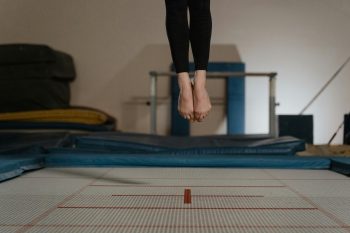Cardio doesn’t have to mean pounding the pavement. While running is a classic heart-pumping workout, it’s not for everyone. Whether you’re recovering from an injury, dealing with joint pain or simply looking for a change, there are plenty of effective alternatives to keep your cardiovascular system in top shape—without having to lace up for a jog. From trampolining to rowing and low-impact routines, here’s how to move your body and boost your heart health without the impact of running.
ALSO SEE: Functional fitness for active ageing: Tips to keep you strong for life
Why cardio matters—even if you don’t run
Cardiovascular exercise strengthens your heart, improves circulation and helps your body use oxygen more efficiently. It supports healthy blood pressure, reduces your risk of heart disease and boosts your mood by stimulating the release of endorphins. The good news? You don’t need to run to get those benefits. There are many other ways to raise your heart rate, increase endurance and feel energised.
Trampolining

Pexels
Bouncing on a mini trampoline, also known as rebounding, may seem like child’s play, but it’s a surprisingly effective cardio workout. It activates your core, improves balance and coordination, and delivers a low-impact burn that’s easy on your joints. Plus, because you’re constantly working against gravity, it challenges your cardiovascular system and helps build endurance. Just a few minutes a day can improve circulation and support lymphatic drainage, giving you both fitness and detoxifying benefits in one session.
The ski machine
Also called the cross-country ski machine, this gym staple mimics the movement of skiing while working both your upper and lower body. It provides a smooth, gliding motion that’s joint-friendly and effective at increasing your heart rate. Because it engages arms, legs and core simultaneously, you’ll burn calories efficiently while also building strength and stamina. It’s particularly good for those who want to work on coordination and balance while still getting a serious sweat in.
Rowing

Pexels
Rowing machines offer a powerful cardio workout that’s easy on the knees but tough on the muscles. Each stroke combines pushing with the legs, pulling with the arms and bracing with the core, offering a full-body workout that improves strength and aerobic capacity. Rowing is also excellent for posture and spine health, thanks to its emphasis on alignment and pulling through the back. And while it may feel like a strength workout, it’s undeniably cardiovascular—especially during longer intervals or high-intensity sprints.
Swimming
Swimming is often underrated, but it’s one of the best low-impact cardio workouts available. It builds lung capacity, strengthens your heart and engages every major muscle group. The resistance of the water makes your muscles work harder, yet the buoyancy supports your joints, making it ideal for people with arthritis or limited mobility. Even moderate-paced laps can provide an intense cardiovascular boost without any of the wear and tear of land-based exercise.
Stationary cycling

Pexels
Whether you prefer a spin class or a solo session at the gym, stationary bikes offer a joint-friendly yet effective cardio workout. You can control the intensity, vary your pace and even work on interval training, all while remaining seated. It’s perfect for those easing back into exercise or looking to break a sweat without putting stress on their knees.
Why variety is good for your heart and mind
Mixing up your cardio routine helps you stay motivated, reduce the risk of injury and improve overall fitness. Different types of exercise challenge your body in different ways, engaging various muscle groups and improving everything from balance to coordination. Most importantly, finding forms of cardio you actually enjoy increases your chances of sticking with it. And when your heart gets consistent attention, your health follows.
Low impact doesn’t mean low results
Low-impact cardio is perfect for anyone dealing with joint pain, recovering from injury or simply seeking a gentler approach to fitness. But don’t be fooled by the term ‘low impact’—these workouts can be just as effective as high-impact routines when it comes to improving cardiovascular health, burning fat and supporting longevity.
Activities like walking on an incline treadmill, cycling, swimming and elliptical training provide excellent cardio benefits without the pounding impact on your knees, hips and ankles. They allow you to work out for longer periods, which is ideal for building endurance and improving your heart’s efficiency.
Whether it’s bouncing, gliding, rowing or swimming, cardio doesn’t have to mean running. With so many accessible, low-impact options available, it’s easier than ever to make heart health a priority in a way that suits your body and lifestyle. The key is consistency and enjoyment—so find what moves you, and keep going.
ALSO SEE:
Featured Image: Pexels

